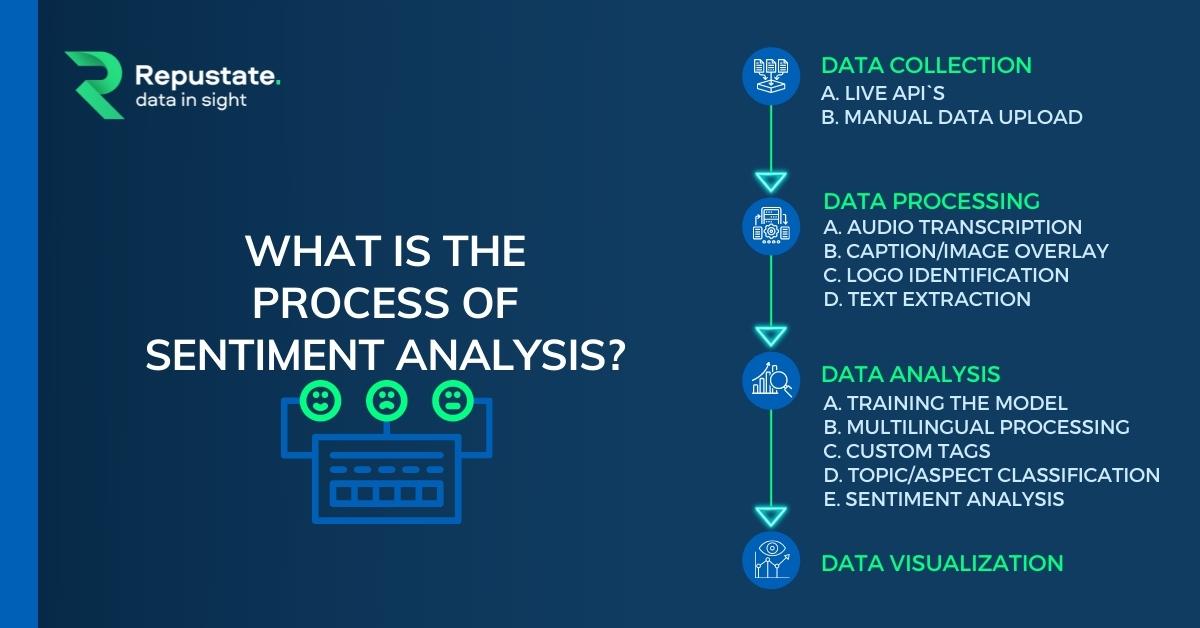“Decoding Emotions: A Deep Dive into Sentiment Analysis
Artikel Terkait Decoding Emotions: A Deep Dive into Sentiment Analysis
- The Rise Of The Conversational Machines: A Deep Dive Into AI Chatbots
- The Rise Of The Intelligent Assistant: Navigating The World With AI By Your Side
- The Symphony Of Sound: A Deep Dive Into Voice Recognition Technology
Table of Content
Video tentang Decoding Emotions: A Deep Dive into Sentiment Analysis
Decoding Emotions: A Deep Dive into Sentiment Analysis

In the age of information overload, where opinions and emotions are expressed freely across various digital platforms, understanding the underlying sentiment behind text data has become crucial. This is where Sentiment Analysis, also known as Opinion Mining, steps in. It’s a powerful Natural Language Processing (NLP) technique that allows us to automatically identify and extract subjective information, primarily focusing on the emotional tone expressed in text.
This article will delve into the intricacies of sentiment analysis, exploring its methodologies, applications, challenges, and future trends.
What is Sentiment Analysis?
At its core, sentiment analysis aims to determine the attitude, emotion, or opinion expressed in a piece of text towards a particular topic, product, service, or individual. It goes beyond simply identifying keywords and delves into the nuanced language used to convey feelings. The goal is to classify the sentiment as positive, negative, or neutral, and in some cases, even more granular emotions like anger, joy, sadness, or fear.
The Mechanics of Sentiment Analysis: How it Works
Sentiment analysis relies on a combination of computational linguistics, machine learning, and statistics to decipher the emotional content of text. Here’s a breakdown of the key steps involved:
-
Data Collection: The process begins with gathering the text data that needs to be analyzed. This data can come from various sources, including social media posts, customer reviews, survey responses, news articles, and forum discussions.
-
Data Preprocessing: Raw text data is often messy and requires cleaning and preparation before it can be analyzed effectively. This involves several steps:
- Tokenization: Breaking down the text into individual words or tokens.
- Lowercasing: Converting all text to lowercase to ensure consistency.
- Stop Word Removal: Eliminating common words like "the," "a," "is," and "are," which don’t contribute significantly to sentiment analysis.
- Stemming/Lemmatization: Reducing words to their root form to standardize variations (e.g., "running," "ran," and "runs" become "run").
- Handling Negation: Addressing negation words like "not," "no," and "never," which can significantly alter the sentiment of a sentence.

-
Feature Extraction: This step involves identifying and extracting relevant features from the preprocessed text that can be used to train a sentiment analysis model. Common feature extraction techniques include:
- Bag-of-Words (BoW): Representing text as a collection of words, disregarding grammar and word order. It counts the frequency of each word in the text.
- Term Frequency-Inverse Document Frequency (TF-IDF): Weights words based on their frequency in a document and their rarity across the entire corpus. This helps to identify words that are particularly important for a specific document.
- N-grams: Sequences of n words that appear together in the text. Analyzing n-grams can capture contextual information and improve accuracy.
- Word Embeddings (Word2Vec, GloVe, FastText): Representing words as dense vectors in a multi-dimensional space. These vectors capture semantic relationships between words, allowing the model to understand the context and meaning of the text more effectively.
-
Sentiment Classification: This is the core of sentiment analysis, where the extracted features are used to train a machine learning model to classify the sentiment of the text. Different algorithms can be used for this purpose, including:
- Lexicon-based Approach: Relies on a pre-defined dictionary or lexicon of words and their associated sentiment scores. The sentiment of a text is determined by summing up the sentiment scores of the individual words. This approach is simple to implement but may not be accurate for complex sentences or domain-specific language.
-
Machine Learning Approaches:
- Naive Bayes: A probabilistic classifier based on Bayes’ theorem. It assumes that the presence of a particular word in a text is independent of the presence of other words.
- Support Vector Machines (SVM): A powerful classifier that finds the optimal hyperplane to separate data points into different classes.
- Recurrent Neural Networks (RNNs) and Long Short-Term Memory (LSTM) Networks: Designed to process sequential data like text. They can capture long-range dependencies and understand the context of words within a sentence.
- Transformers (BERT, RoBERTa): State-of-the-art models that utilize attention mechanisms to learn contextual relationships between words. They have achieved remarkable results in various NLP tasks, including sentiment analysis.
-
Evaluation: The performance of the sentiment analysis model is evaluated using metrics like accuracy, precision, recall, and F1-score. This helps to assess the effectiveness of the model and identify areas for improvement.


Applications of Sentiment Analysis: A Wide Range of Possibilities
Sentiment analysis has found applications in a diverse range of industries and domains, offering valuable insights and enabling data-driven decision-making:
- Customer Service: Analyzing customer reviews, feedback, and social media mentions to understand customer satisfaction, identify pain points, and improve service quality.
- Marketing and Brand Management: Monitoring brand sentiment to track public perception, identify emerging trends, and measure the effectiveness of marketing campaigns.
- Market Research: Analyzing consumer opinions and preferences to understand market demand, identify new product opportunities, and make informed business decisions.
- Political Analysis: Analyzing public opinion on political candidates, policies, and events to understand voter sentiment and predict election outcomes.
- Financial Analysis: Analyzing news articles, social media posts, and financial reports to gauge market sentiment and predict stock price movements.
- Healthcare: Analyzing patient feedback and medical records to understand patient experiences, identify areas for improvement, and develop personalized treatment plans.
- Social Media Monitoring: Tracking public sentiment on social media platforms to identify potential crises, monitor brand reputation, and engage with customers.
- Product Development: Analyzing user reviews and feedback to identify areas for product improvement and develop new features.
Challenges in Sentiment Analysis: Navigating the Complexities
Despite its advancements, sentiment analysis still faces several challenges:
- Sarcasm and Irony: Detecting sarcasm and irony is difficult for computers as it requires understanding the context and intent behind the words.
- Contextual Understanding: The meaning of a word can change depending on the context in which it is used. Sentiment analysis models need to be able to understand the context of the text to accurately determine the sentiment.
- Negation: Handling negation words like "not" and "no" can be tricky, as they can reverse the sentiment of a sentence.
- Domain Specificity: Sentiment analysis models trained on one domain may not perform well on another domain.
- Multilingual Sentiment Analysis: Analyzing sentiment in different languages requires language-specific resources and techniques.
- Subjectivity and Bias: Sentiment analysis models can be biased by the data they are trained on, leading to inaccurate results.
- Evolving Language: Language is constantly evolving, with new words and phrases emerging all the time. Sentiment analysis models need to be continuously updated to keep up with these changes.
- Spam and Fake Reviews: The prevalence of spam and fake reviews can skew sentiment analysis results and make it difficult to get an accurate picture of public opinion.
Future Trends in Sentiment Analysis: The Road Ahead
The field of sentiment analysis is constantly evolving, with new techniques and technologies emerging all the time. Some of the key future trends include:
- Deep Learning: Deep learning models, such as transformers, are becoming increasingly popular for sentiment analysis due to their ability to capture complex contextual relationships.
- Explainable AI (XAI): Focusing on making sentiment analysis models more transparent and interpretable, allowing users to understand why a particular sentiment was assigned to a piece of text.
- Multimodal Sentiment Analysis: Combining text with other modalities, such as images, audio, and video, to improve the accuracy of sentiment analysis.
- Fine-grained Sentiment Analysis: Moving beyond simple positive, negative, and neutral classifications to identify more granular emotions and sentiments.
- Real-time Sentiment Analysis: Analyzing sentiment in real-time to provide immediate feedback and insights.
- Personalized Sentiment Analysis: Tailoring sentiment analysis models to individual users based on their preferences and past behavior.
- Ethical Considerations: Addressing the ethical implications of sentiment analysis, such as privacy concerns and the potential for bias.
FAQ: Your Questions Answered
-
Q: What is the difference between sentiment analysis and opinion mining?
- A: The terms are often used interchangeably. However, some argue that sentiment analysis focuses more on the emotional tone of the text, while opinion mining is broader and includes extracting opinions, beliefs, and attitudes.
-
Q: What are some popular tools and libraries for sentiment analysis?
- A: Python libraries like NLTK, TextBlob, spaCy, and transformers (Hugging Face) are widely used. Cloud-based platforms like Google Cloud Natural Language API, Amazon Comprehend, and Microsoft Azure Text Analytics also offer sentiment analysis services.
-
Q: How accurate is sentiment analysis?
- A: Accuracy depends on the complexity of the text, the quality of the training data, and the chosen algorithm. While accuracy has improved significantly with deep learning models, challenges like sarcasm and context still pose limitations. Expect accuracy to range from 70% to 90% in many applications.
-
Q: How can I improve the accuracy of my sentiment analysis model?
- A: Several strategies can help: using a larger and more diverse training dataset, fine-tuning pre-trained models, incorporating domain-specific knowledge, handling negation and sarcasm effectively, and using more sophisticated algorithms.
-
Q: Can sentiment analysis be used for languages other than English?
- A: Yes, but it requires language-specific resources, such as lexicons and training data. Many sentiment analysis tools and libraries support multiple languages.
Conclusion: Harnessing the Power of Emotional Understanding
Sentiment analysis has emerged as a powerful tool for understanding the emotional landscape of text data. Its applications are vast and continue to expand as the technology evolves. While challenges remain, ongoing research and development are paving the way for more accurate, nuanced, and ethically responsible sentiment analysis solutions. By harnessing the power of emotional understanding, businesses, organizations, and individuals can gain valuable insights, make informed decisions, and build stronger relationships with their stakeholders. As we move further into the digital age, sentiment analysis will undoubtedly play an increasingly important role in shaping how we understand and interact with the world around us.
